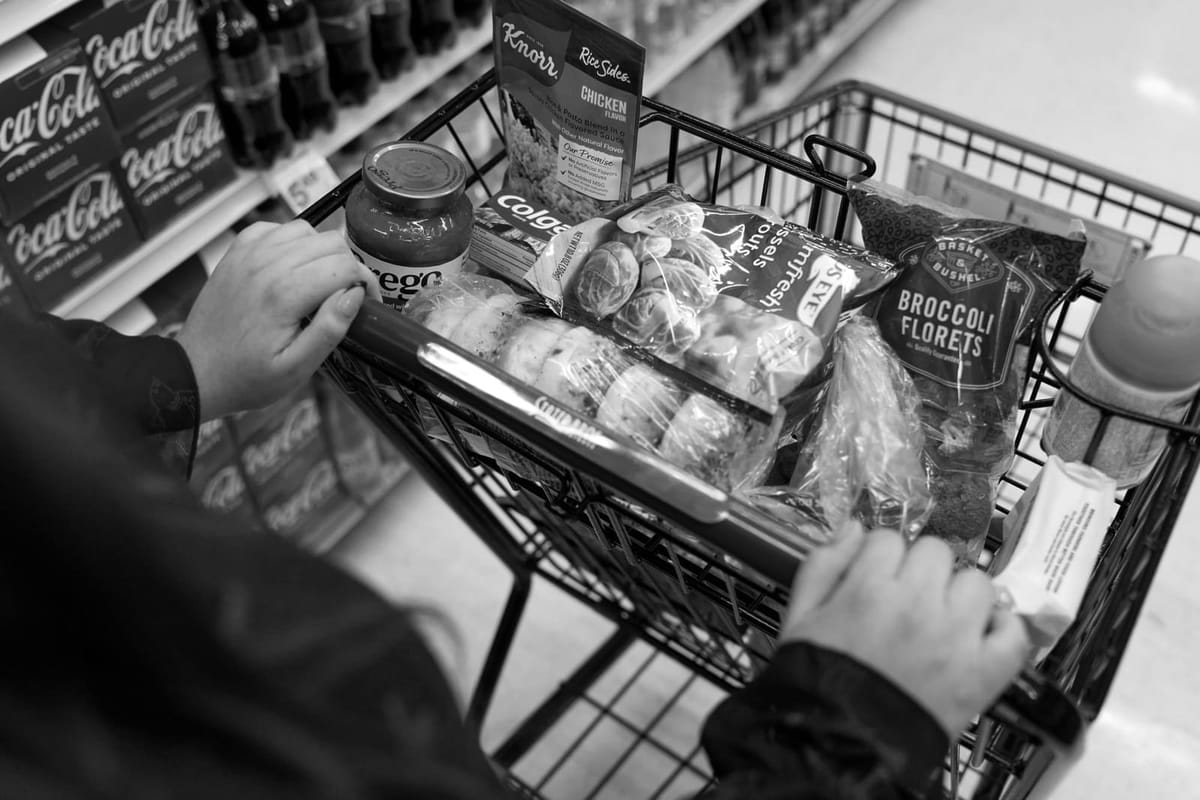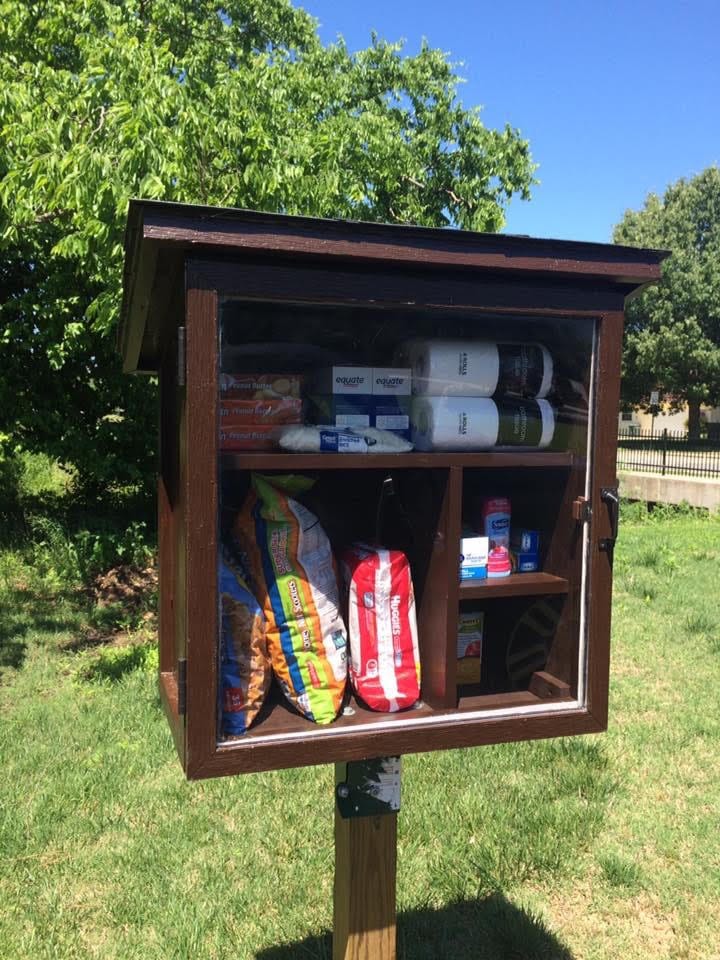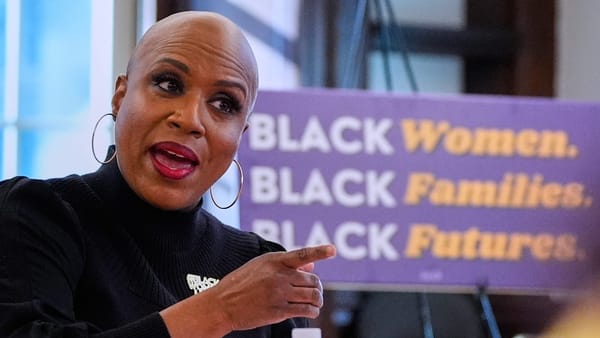When The Government Shutdown Came For SNAP, Women Stepped Up to Help
On Saturday, 42 million Americans are set to lose crucial food support. A grassroots mutual aid movement fueled by moms is springing into action.

Imagine, in the U.S., trying to feed yourself and your family on $6.24 a day. That’s the average amount allocated for recipients of the U.S. government’s Supplemental Nutrition Assistance Program (SNAP). But even that paltry help is set to disappear on Saturday. And in the face of people in need, where the government fails, women are stepping up to help.
By now you’ve likely heard that the ongoing government shutdown will effectively shutter SNAP. What you might not know is how widespread the effects will be, and that the government could step in to help, but despite bipartisan urging from Congress, the opposition of the USDA and public outcry, Trump is refusing to fund this essential safety net.
First, the scope of the problem: 42 million Americans, or 1 in 8 people in the richest country in the world, receive SNAP benefits. Most recipients are children, the elderly, and the disabled, or employed people in low-wage jobs. In fact, an estimated 15.7 million people receiving SNAP benefits are in full-time jobs with wages so low they meet the poverty threshold requirements (Walmart, McDonalds and Amazon top the list for highest number of employees on food assistance.)
This isn’t the first time the government has shut down, but it is the first time in the program’s 61-year history that SNAP benefits have been cut. In all other shutdowns, SNAP benefits have been funded using contingency funds from the United States Department of Agriculture (USDA). This time around the USDA has reversed its previous position, saying that its contingency fund is "only for true emergencies like hurricanes, tornadoes, and floods," not for the funding of the program, as in the past.
Earlier this week, 25 states sued the Trump administration over its recent refusal to fund SNAP during the government shutdown. The states asked the federal court to rule by Friday and force the administration to use the contingency funds to pay SNAP benefits next month. The contingency fund comprises $5 billion to $6 billion, which would be enough to provide at least partial payments.
At the same time, the Trump Administration has canceled the USDA’s annual Household Food Security Report, which means the full effects of the shutdown may never be understood. "For the first time in 30 years, America will no longer track hunger nationwide," Beth Shapiro of Citymeals on Wheels wrote for TIME. And as a result, millions of Americans will "vanish from view as the social safety net continues to collapse around them," he said.
But erasing data doesn’t make a problem—especially a $100 billion problem—go away, and where the government fails to step up, food banks and moms are instead.
The limits of food banks
Food banks nationwide were already operating at or near capacity before SNAP cuts. They don’t have the resources, infrastructure, or food supplies to replace the billions of dollars in food benefits that SNAP provides.
All of this means that cutting SNAP couldn’t come at a worse time. According to ProPublica reporting, this spring, the Trump administration abruptly cut $500 million in deliveries from a program that sends meat, dairy, eggs and produce to food banks and other organizations across the country.
Food insecurity is higher than at any time since the aftermath of the Great Recession, according to federal data, and many food banks are reporting higher need than they saw at the peak of the pandemic.
Experts say that cutting SNAP could lead to a surge in demand that would double the number of people needing help. They say this level of demand is impossible for the charitable food networks to cover.
Moms and mutual aid
Starting last week, posts popped up across social media sharing food bank resources and calling for donations. Then came the offers of direct help—moms offering to buy groceries for others or to send money directly to those in need—embedded within the Facebook Buy Nothing groups and mom chat groups.
One friend of mine, a single mother, set up her own mutual aid network for other single moms by creating a Google form and sharing it across her social media. She asked her network for direct cash donations to distribute to moms whose benefits are being cut and within a day she had distributed $250 to 10 moms in need.
I’m not surprised by her generosity, or by the fact that 100% of the posts I’ve seen offering help in the face of SNAP cuts have been from women. Women, particularly single women, are more likely than men to donate to charity, and when they give, women tend to give a larger percentage of their income than men. Women are also more likely to volunteer and donate via social media.
Another friend of mine, in a rural West Michigan town, told me about a woman in her neighborhood who for the last year has been taking donations of leftovers from her friends and neighbors several times a week. She packages them up and offers them to those in need. She has inspired others to do the same. With grocery prices up 3% since last year, even with SNAP benefits, families are struggling to make ends meet.
The Little Free Pantry movement

Asking for help can carry shame for many, and as women we’ve been conditioned to do things for ourselves without burdening others. Getting to a food bank can be logistically difficult, and for many it can feel embarrassing to take a stranger up on the offer to buy your groceries. The Little Free Pantry movement was established to push back on these concerns. Much like the charming Little Free Library boxes that dot suburban lawns throughout the country, the little free pantry movement is, according to the website, “a grassroots, crowdsourced solution to immediate and local need.”
Jessica McClard launched the grassroots mini pantry movement in May 2016 in Fayetteville, Ark., when she planted the Little Free Pantry Pilot, a wooden box on a post containing food, personal care, and paper items She hoped her spin on the Little Free Library concept would pique local awareness of food insecurity while creating a space for neighbors to help meet neighborhood food needs. Throughout the U.S.—and internationally—the mini pantry movement has continued to grow and expand.
The site offers a map of little free pantry locations throughout the country. While many are pretty painted boxes, I added one to my front lawn in a simple airtight bin.
To be clear, none of these individual donations or grassroots mutual aid efforts can replace the $100 billion hole in basic nutrition needs left by cutting SNAP benefits. But in times of need, when our government turns its back on its most vulnerable people, women step up to help.





